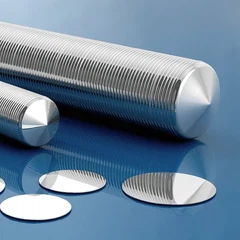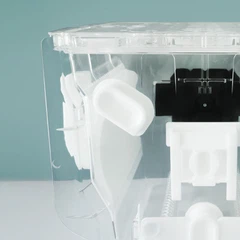We all know about silicon. However, the silicon used in chip manufacturing is sometimes single-crystal silicon and sometimes polycrystalline silicon. The performance of polycrystalline and single-crystal silicon differs significantly. So, what are their respective advantages? What are their applications? And how are they produced?
What is a crystal?
What is a crystal?

A crystal is a solid in which atoms, ions, or molecules are arranged in a spatially regular pattern according to a certain periodicity, forming a regular geometric shape.
Common crystalline materials include:
Metallic crystals: such as iron, copper, gold, and silver.
Ionic crystals: NaCl, CuSO4, etc.
Dielectric crystals: silicon oxide, silicon nitride, etc., which can be crystalline or amorphous.
Semiconductor crystals: such as silicon and germanium.
What are single crystal silicon and polycrystalline silicon?
A single crystal refers to a material in which the atoms, ions, or molecules are arranged uniformly from one end to the other, maintaining the same orientation. The entire crystal has only one crystal orientation and contains no grain boundaries.
A polycrystal refers to a material composed of many small grains (single crystals), each with its own unique crystal orientation. These grains appear randomly oriented on a macroscopic scale, but the orientation within each grain is consistent.

Single-crystal silicon has only one crystal orientation, typically <100>, <110>, or <111>. Different crystal orientations have varying effects on processes such as etching, oxidation, and ion implantation during semiconductor manufacturing, making the appropriate orientation crucial for optimizing chip performance.
Comparison of Properties of Monocrystalline Silicon and Polycrystalline Silicon
Electrical Properties: Polycrystalline silicon has slightly inferior electrical properties compared to monocrystalline silicon, primarily due to carrier scattering centers formed at polycrystalline silicon grain boundaries. Monocrystalline silicon, however, has higher electron mobility due to its lack of grain boundaries and structural continuity.
Appearance: Monocrystalline silicon resembles a mirror after polishing. This is because when light strikes monocrystalline silicon, it reflects light in the same manner and direction. In contrast, when light strikes polycrystalline silicon, each crystal grain reflects light differently, resulting in a granular appearance.
Applications of Monocrystalline and Polycrystalline Silicon in Chips?
Monocrystalline Silicon
1. Monocrystalline silicon wafers, used as substrates
2. Some chip products require thin monocrystalline silicon layers

1. In MOSFETs, polycrystalline silicon is often used as the gate material. Combined with the silicon oxide insulating layer, polycrystalline silicon is the key component that controls the flow of current in transistors.
2. It can be used in solar cells and liquid crystal displays.

3. As a sacrificial layer. During MEMS manufacturing, a sacrificial layer is used to create a temporary structure that is later removed to release the permanent structure.
How are single-crystal silicon and polycrystalline silicon produced?
If used as a substrate,
single-crystal silicon is generally produced using the CZ or FZ method. The CZ method has been previously introduced:
Introduction to the complete CZ process for producing single-crystal silicon.
Polycrystalline silicon, on the other hand, uses block casting, FBR, and Siemens methods.
If film formation is used in a chip,
single-crystal silicon requires CVD epitaxy, molecular beam epitaxy, and other methods. Polycrystalline silicon, on the other hand, can be produced using CVD, PVD, and other methods.













